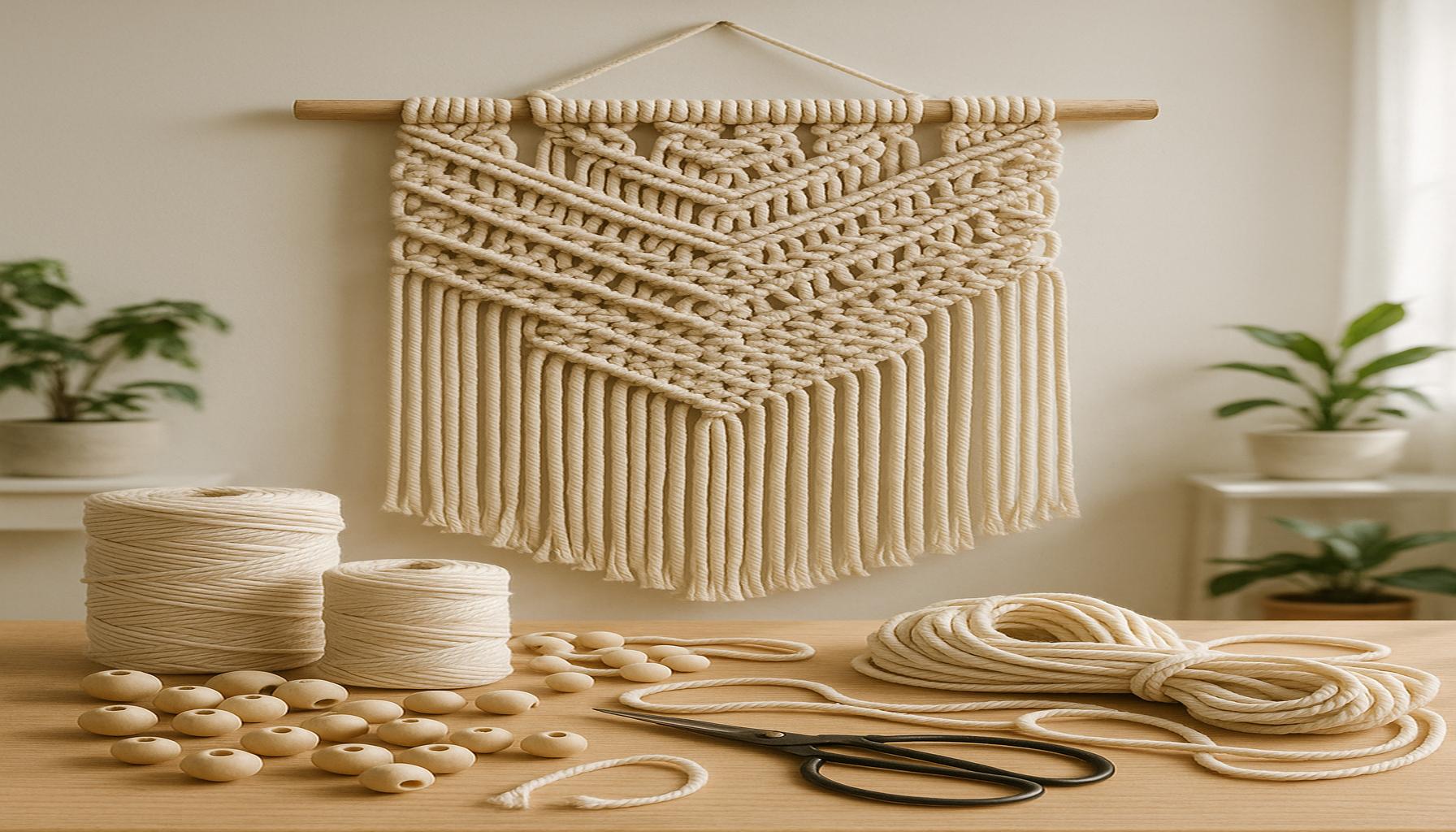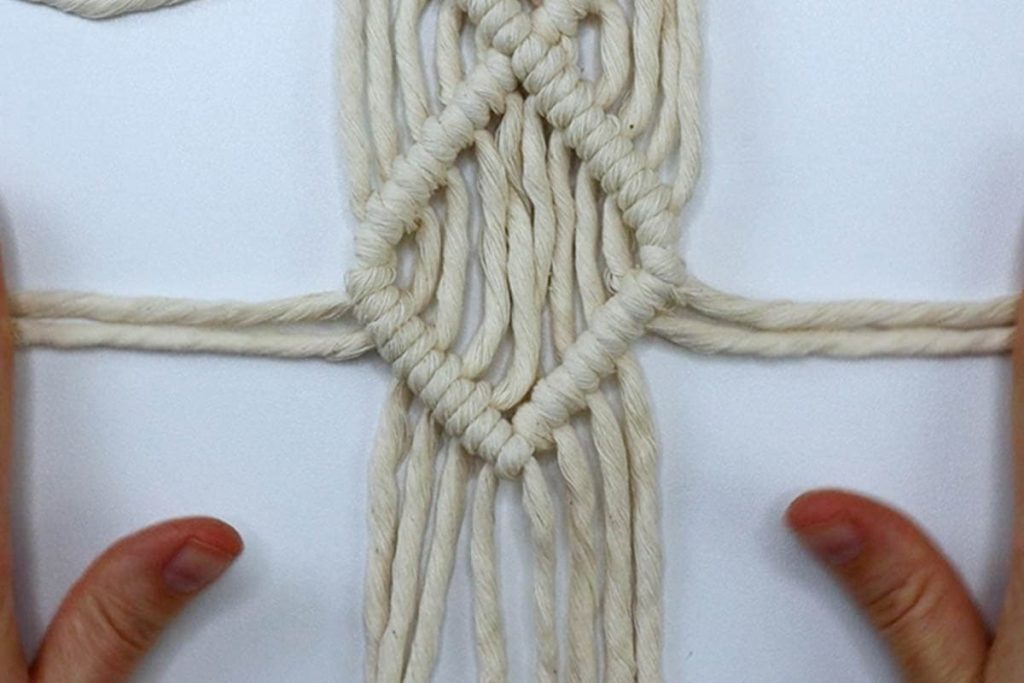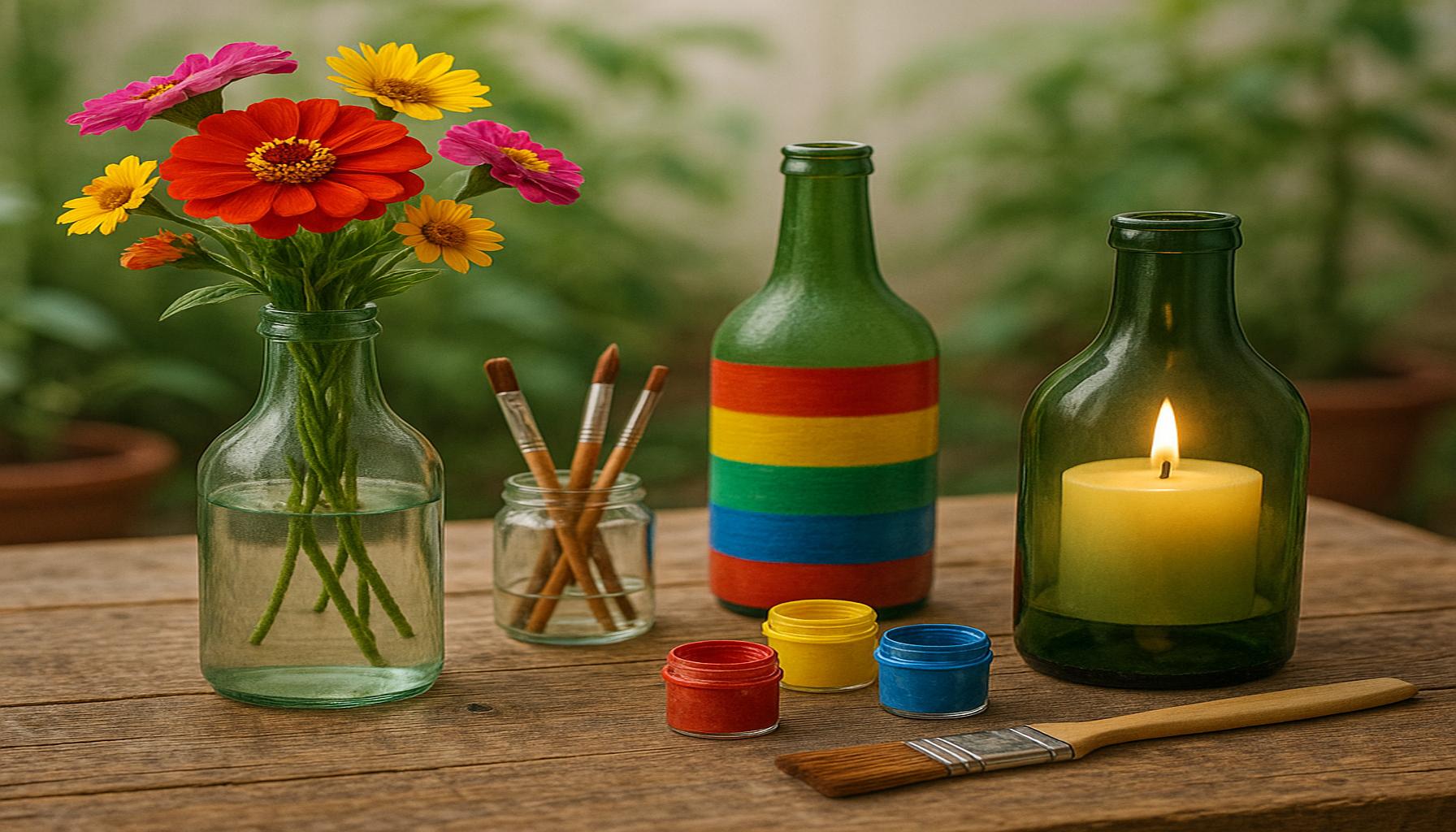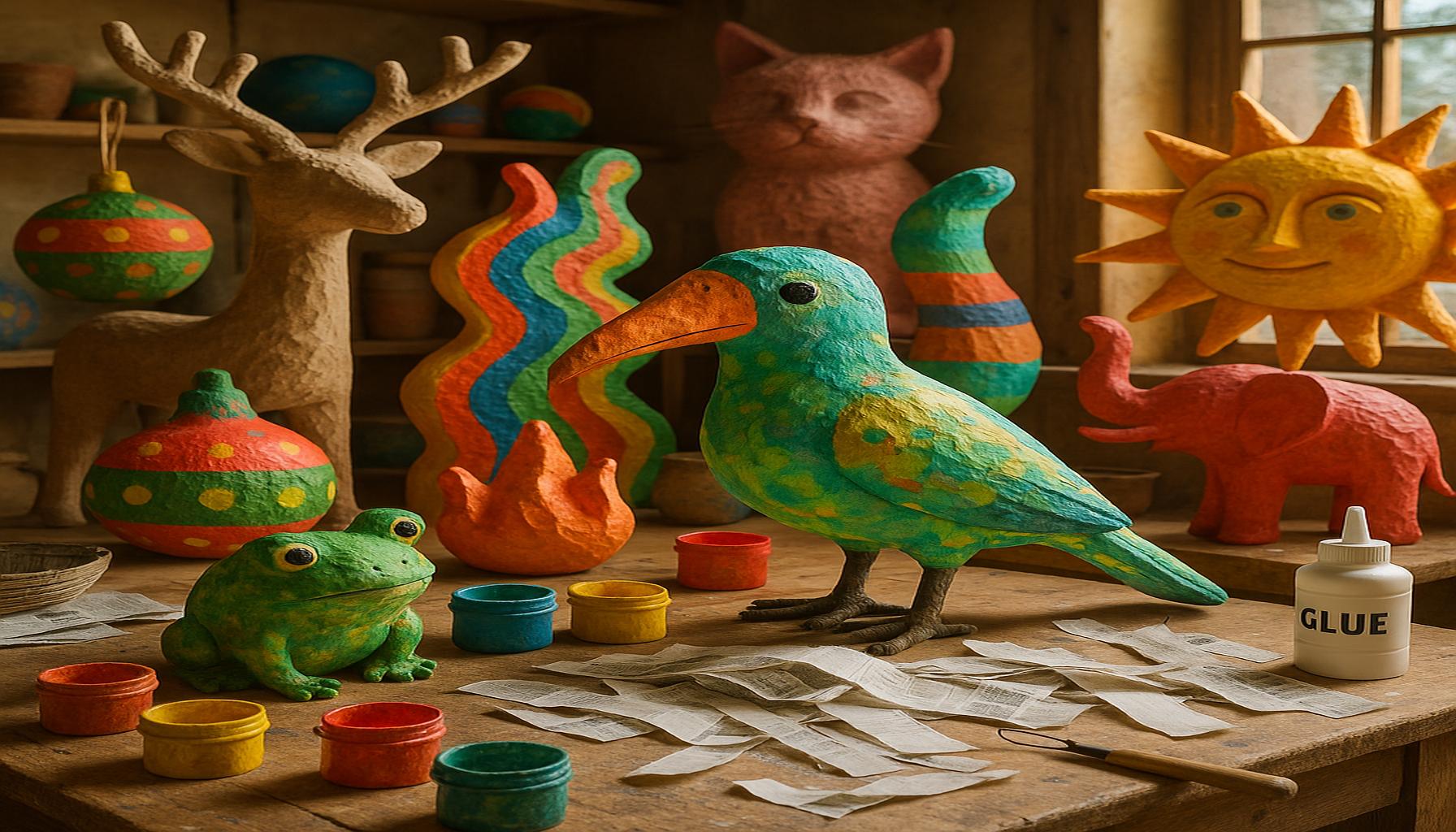Macramé Decor: Knots and Techniques to Create Unique Pieces

Explore the World of Macramé Decor
In recent years, macramé decor has uniquely captured the hearts of DIY enthusiasts and interior designers alike. This traditional textile technique, which involves tying knots to weave ropes or cords together, opens up a realm of creative possibilities. From stylish wall hangings to sophisticated plant holders, macramé brings a distinct texture and charm that can instantly transform any space into a cozy sanctuary.
For those interested in exploring this fascinating craft, whether as a hobbyist or a seasoned crafter aiming to refine their skills, understanding the fundamentals of macramé is crucial. The appeal of this craft lies not only in its aesthetic but also in its practical aspects. Here are some key points that highlight its attractiveness:
- Versatility: Macramé can be used to create a diverse array of items including wall hangings that add a bohemian flair, plant holders that elevate greenery from the floor, and even macramé furniture like hanging chairs or intricate room dividers.
- Eco-Friendly: Many macramé creations are made from natural materials like hemp, cotton, or jute, making them a sustainable choice that fits with today’s eco-conscious trends.
- Personal Touch: Each macramé piece is unique, allowing crafters to showcase their personal styles and creativity, making it a meaningful addition to any home.
To become a macramé pro, one must learn various knots and techniques, which serve as the building blocks of this craft. Here are some of the fundamental knots you will typically encounter:
- Square Knot: This essential knot is often used in creating patterns and can form the basis of many designs.
- Half Hitch: This simple yet effective knot can create a layered look, perfect for items like wall hangings or table runners.
- Spiral Knot: This knot can add a dynamic twist to your projects, making it a favorite for decorative fringes or borders.
With just a few basic materials such as cords and wooden dowels, paired with a dash of inspiration, your home can be adorned with unique macramé pieces. As this craft continues to rise in popularity, the opportunities for self-expression, creativity, and enhancing your living space become endless. Dive into this artistic world, discover various styles, and perhaps even take part in workshops or online classes to refine your skills further. The timeless technique of macramé promises not only beautiful results but also a rewarding creative journey!
DISCOVER MORE: Click here to uncover the therapeutic power of photography

Mastering the Basics of Macramé Knots
To embark on your macramé journey, it’s essential to grasp the foundational knots that define this craft. The ability to execute these knots opens the door to endless creative possibilities, enabling you to create intricate patterns and stunning designs. Understanding these techniques not only enhances your skills but also boosts your confidence as you start to experiment with various projects.
Here’s a deeper look at some of the fundamental knots that every macramé enthusiast should master:
- Square Knot: This knot is a must-know in the macramé toolkit. It consists of four strands and is created by alternately looping pairs of strands around each other. The square knot is often the building block of intricate macramé patterns. Its versatility allows it to be used in various projects from wall hangings to decorative belts, laying the groundwork for more complex designs.
- Half Hitch: The half hitch is another foundational knot that can provide character and depth to your creations. By wrapping a cord around another cord once, you can create a layered effect. This knot is particularly effective for wall hangings and table runners, adding structure and dimension to your work. Practice combining half hitches in different directions to see how it transforms your design.
- Spiral Knot: This knot adds a dynamic flair to any macramé piece and is loved for its textured finish. Created by repeating half hitches around a single cord, the spiral knot can bring movement and interest, making it ideal for fringes or decorative borders. Experiment with this knot to create eye-catching elements that draw attention to your piece.
As you familiarize yourself with these knots, you’ll discover how they interact to create elaborate designs. It’s beneficial to keep practicing until you can execute them comfortably, as muscle memory will play a vital role in more advanced techniques down the line. Once you master the basics, the next step is to explore various macramé patterns, which can range from simple to complex, depending on your level of expertise and artistic vision.
Moreover, understanding knot tension is crucial when working on your macramé projects. Maintaining consistent tension not only ensures that your pieces appear professional but also contributes to the overall integrity and durability of the work. This attention to detail can make a significant difference between a haphazard creation and an exquisite piece of art.
With these foundational skills in your toolkit, you are well-prepared to explore the vast world of macramé decor. The next phase is to experiment with various materials, colors, and designs that reflect your personal style. Whether you are crafting a simple plant hanger or an elaborate wall hanging, every piece you create can showcase your individual flair while enhancing your home’s atmosphere.
In the world of macramé decor, the possibilities are truly endless. One of the key aspects of this craft lies in the versatility of its knots. From the basic square knot to the more intricate lark’s head knot and half-hitch knots, each technique opens up a new realm of creativity. These knots can be combined in various ways to craft stunning pieces that not only beautify a space but also bring a personalized touch to home decor.
Moreover, the materials used in macramé play a significant role in the overall aesthetic. Natural fibers like cotton, jute, and linen not only contribute to the durability of the projects but also enhance their visual appeal. The use of plant-based materials aligns with sustainable decor trends, attracting eco-conscious individuals looking to incorporate organic elements into their homes.
Another compelling reason to explore macramé is the therapeutic aspect of knotting. Engaging in this hands-on activity can foster mindfulness and reduce stress. The rhythmic motion of tying knots can be meditative, allowing individuals to escape from the fast pace of modern life. Additionally, creating unique pieces can ignite a sense of accomplishment and pride in one’s crafting skills.
Furthermore, macramé decor is highly customizable. Whether it’s wall hangings, plant hangers, or intricate tapestries, each piece can be tailored to fit personal style and space requirements. This element of customization has made macramé a popular choice for gift-giving, as handmade items often carry sentimental value.
With an array of resources available online, from tutorials to pattern kits, anyone can dive into this fascinating craft. As we explore deeper into macramé techniques, we can uncover detailed insights on how to create stunning pieces that showcase not only skill but also creativity. Each knot tells a story and transforms simple materials into works of art, making macramé a uniquely rewarding endeavor.
| Category | Benefits |
|---|---|
| Versatile Knots | Create intricate designs that enhance any decor. |
| Customization | Tailor designs to fit personal aesthetics and unique spaces. |
DISCOVER MORE: Click here to dive into watercolor techniques
Exploring Advanced Techniques and Unique Patterns
Once you’ve mastered the essential knots of macramé, the next step is to dive into advanced techniques and explore innovative patterns that truly reflect your artistic vision. As you expand your skills, you will discover how to incorporate various elements into your macramé decor creations, allowing for unique pieces that can elevate your interior style.
One particularly exciting aspect of advanced macramé is the ability to create various shapes and textures that bend the traditional boundaries of this craft:
- Bridging Techniques: Bridging techniques allow artists to create spans within a piece, giving rise to arches or intricate structures. By cleverly using knots and cords, you can create hanging shelf supports or decorative arches that introduce a dynamic element to your decor. This technique is increasingly popular for use in boho weddings or garden parties, where stunning visual displays capture attention.
- Color Integration: Adding pops of color into your macramé creations can completely transform the final appearance of your projects. Whether through dyed cords or ribbon-like textile additions, color integration not only creates visual interest but can also reflect personal aesthetics or complement existing decor. Experiment with gradients or contrasting hues to find a combination that resonates with your style.
- Beading and Embellishments: Incorporating beads or other embellishments into your macramé work can enrich the texture and aesthetic of each piece. Beads can be threaded into the cords before knotting, or added after completing a section, creating unique focal points in wall hangings or plant hangers. This technique offers an avenue for personalization, allowing craftspeople to infuse their individuality into each project.
As you explore these advanced techniques, it becomes essential to pay attention to the overall composition of your designs. Consider how the knots and patterns interact with the space they will occupy. Successful macramé decor often hinges not only on the knots used but also on how those knots work together to create visual balance and interest.
Moreover, engaging in collaborative work with other artists can open up new possibilities for learning and creativity. By attending macramé workshops or joining local crafting groups, you can share techniques, experiment with unusual materials, and even discover innovative patterns that you may not have considered before. Many cities across the United States host regular workshops or classes focusing specifically on macramé techniques, embracing the community aspect of this art form.
Lastly, don’t shy away from interpreting traditional macramé designs through a modern lens. The resurgence of macramé decor in today’s homes often involves a blend of the old and new, merging timeless knotting techniques with contemporary styles, such as mid-century modern or industrial aesthetics. This fusion allows artists to create unique pieces that resonate with a wider audience, proving that macramé can indeed remain relevant while evoking a sense of nostalgia.
As you venture into the world of advanced macramé techniques and innovative patterns, reflect on what resonates with your personal style. With every project, continue honing your skills, experimenting with ideas, and ultimately creating macramé decor that is distinctly your own.
DISCOVER MORE: Click here to unlock the power of creative writing
Conclusion
In conclusion, the art of macramé decor presents an extraordinary opportunity to express creativity through intricate knots and innovative techniques. From mastering fundamental knots to exploring advanced methods such as bridging structures, color integration, and the incorporation of beading, crafters can create striking pieces that enrich their living spaces. The versatility of macramé allows decorators to transcend traditional design, merging nostalgic patterns with contemporary aesthetics to fit modern homes seamlessly.
As the trend of macramé decor continues to gain traction in the United States, local workshops and creative communities provide ideal platforms for enthusiasts to connect, share their love for the craft, and exchange fresh ideas. These interactions not only enhance individual skills but also cultivate the spirit of collaboration, leading to the birth of innovative and unique designs.
Ultimately, the journey of creating macramé decor is a personal exploration, reflecting one’s individual style and vision. As you refine your skills, don’t hesitate to push traditional boundaries and experiment with new techniques. By continuing to innovate and seek inspiration, you can ensure that each piece you create is not just a decorative item but a reflection of your artistic expression. Embrace the transformative magic of knots and discover how they can elevate your decor to new heights.



